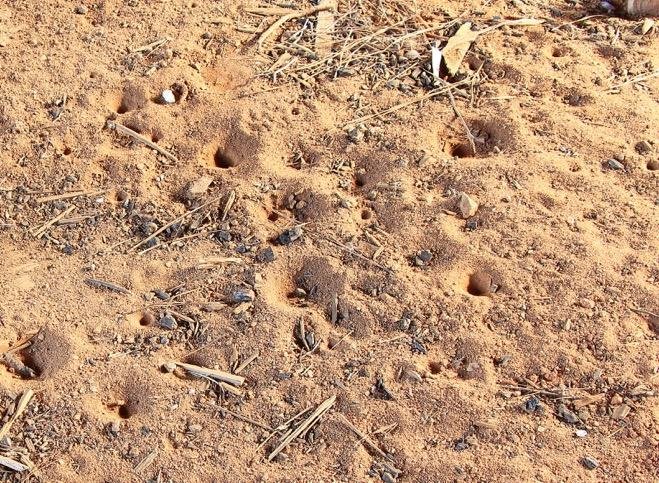Doodling in the dust
tompol@earthlink.net
Homes perch on rock piers in a land called Abandonment.
But as that Elton John song goes, they’re still standing.
Now modern homes with closed-in crawl spaces look more together, but they …
This item is available in full to subscribers.
Subscribe to continue reading. Already a subscriber? Sign in
Get 50% of all subscriptions for a limited time. Subscribe today.
Please log in to continueNeed an account?
|
Doodling in the dust
tompol@earthlink.net
Homes perch on rock piers in a land called Abandonment.
But as that Elton John song goes, they’re still standing.
Now modern homes with closed-in crawl spaces look more together, but they deny kids fun. Yesteryear’s dusty crawl spaces served as a playground.
I’d crawl around looking for doodlebugs, saying, “Doodlebug, doodlebug, your house is on fire” while twisting a grass stem in the ant lion’s sandy pit. Sometimes it would pop up thinking an ant dinner had arrived.
Doodlebugs got my sister Brenda and me in trouble.
We had crawled under the church near Dad’s saw shop looking for doodlebugs. Dad gave us a big-time scolding for that.
Doodling in the dust beneath that church is impossible now. Its crawl space is bricked in, as are most homes and buildings.
If you played this game, you grew up before crawl spaces shut away doodling in the dust. I rarely see doodlebugs (ant lions) anymore. Bet you don’t either.
Open crawl spaces worked fine until air conditioning created condensation on floor joists, insulation, pipes, and ducts. The condensation during summer led to wood rot, mold, and termites.
Closed-in crawl spaces better insulate homes, but they trap moisture. Doodlebugs need dry and dusty sand.
So, did doodlebugs give way to bricked-in crawl spaces and air conditioning? Did termites replace doodlebugs?
I turned to a friend, Garry Burns, who understands the complexities of modern home construction.
Garry has a deep background in architecture and construction. He said controlling moisture is always an issue with homes, especially in the humid South. Insulation is key.
“Back in the 1970s, builders made homes and offices too airtight, and it led to problems,” Gary said.
One problem was the entrapment of gases venting from upholstery and furniture. Newton’s 3rd law came into effect: “For every action, there is an equal and opposite reaction.”
Ventilation is not insulation’s friend, but it’s good as doodlebugs and termites go.
I ran into Michael Bedenbaugh, the executive director of Preservation South Carolina, at a house of the 1700s.
I asked him why it had never suffered termites.
The answer: No crawlspace.
Dark moist crawl spaces provide a haven for termites. Hence, we need vapor barriers and termite letters.
Old abandoned homes? They’re still standing. If you know of one, take some kids there so they can see doodlebugs in action.
Change marches on. Today’s kids can’t trick the vicious doodlebug into launching its jaw-snatching, venom-filled attack - closed-in crawl spaces see to that.
Even if doodlebugs tolerated crawl spaces, few kids would wriggle into a dark, spooky place, nor would ants. Termites, however, will.
Sometimes you can’t win for losing. And losing a pastime is what’s going on here.
Kids devote what was once doodlebug time to playing on their phones.
Maybe someone will develop a doodlebug app that simulates the real thing, but be prepared. The doodlebug is not pretty. In fact it’s downright scary with its monstrous alien look and menacing jaws.
Just be glad it’s quite small.
Keywords
down south, doodling, doodlebugOther items that may interest you







Comments
No comments on this item Please log in to comment by clicking here